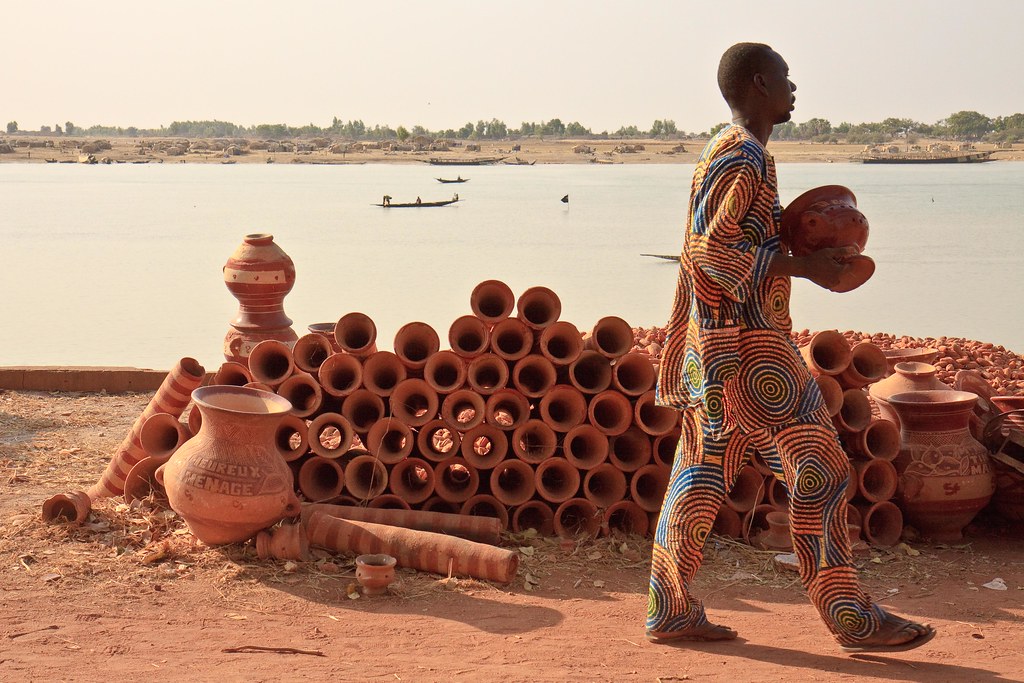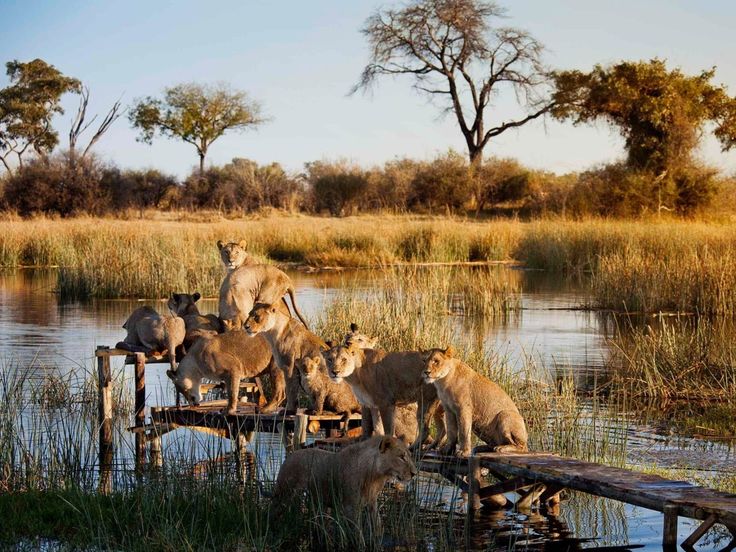Ancient Empires and Kingdoms
The Mali Empire’s Golden Age
Ancient empires and kingdoms have captivated historians and enthusiasts for centuries, showcasing remarkable feats of governance, culture, and innovation across vast territories.
One such empire that shines brightly in history is the Mali Empire, a powerful West African kingdom whose golden age during the 14th century left an indelible mark on the world. Located in what is now modern-day Mali, Senegal, and Guinea, its rise to prominence was fueled by strategic trade routes connecting North Africa to sub-Saharan Africa.
At the heart of this prosperity lay the control over the trans-Saharan trade, particularly gold, which flowed through its territory from mines deep within the African interior. The empire’s wealth extended beyond gold; it encompassed salt, kola nuts, ivory, and slaves, traded across the Sahara Desert to bustling cities like Timbuktu, Gao, and Djenné.
The legendary Mansa Musa, ruler of Mali during its golden age, personified the empire’s wealth and grandeur. His epic pilgrimage to Mecca in 1324 is etched in history, where he famously distributed gold so generously that it destabilized markets across the Middle East.
Mansa Musa’s reign was marked by ambitious architectural projects. He commissioned mosques, libraries, universities, and palaces, transforming cities like Timbuktu into centers of scholarship and learning. The Sankore Madrasa in Timbuktu, a renowned Islamic institution, attracted scholars from far and wide.
Mali’s cultural influence extended beyond its borders. It embraced Islam as the dominant religion, fostering a vibrant Islamic culture that blended with traditional African beliefs and practices. Malians developed unique artistic traditions, evident in their intricate textile designs, sculptures, and musical styles.
However, like many empires, Mali faced internal conflicts and external pressures. The empire eventually fragmented into smaller kingdoms, but its legacy endures through the rich cultural heritage it bequeathed to West Africa. Today, Mali remains a nation grappling with the challenges of development and stability, yet its ancient past continues to inspire a sense of pride and identity.
The story of the Mali Empire is a testament to the ingenuity, resilience, and cultural dynamism of African civilizations.
Mansa Musa and the Hajj
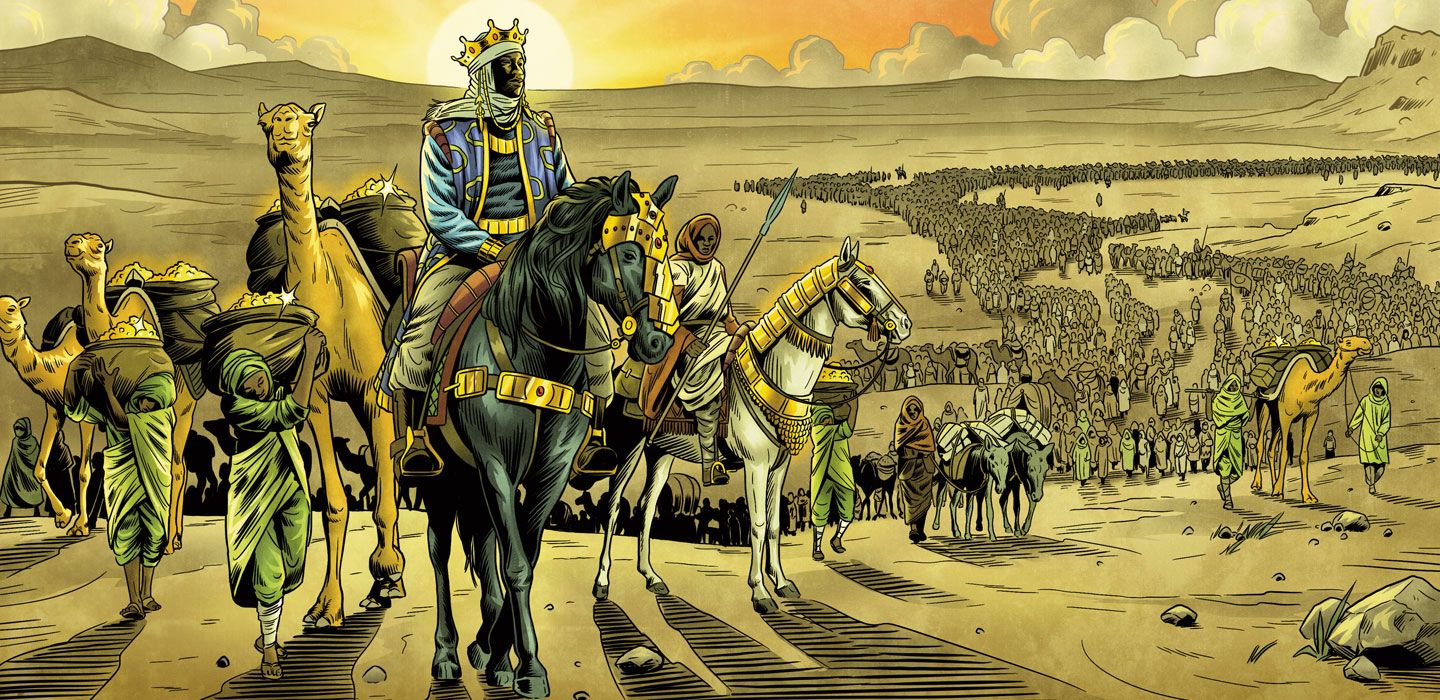
Ancient empires and kingdoms have dotted the globe throughout history, leaving behind legacies that continue to shape our understanding of civilizations past. These powerful entities, often marked by sophisticated political structures, thriving economies, and impressive cultural achievements, rose and fell across continents.
One such empire was the Mali Empire, which flourished in West Africa from the 13th to the 16th centuries. At its heart lay a network of trade routes connecting North Africa with sub-Saharan regions. This strategic position fostered immense wealth for Mali, particularly through the trade of gold, salt, and other valuable commodities.
Mansa Musa, who reigned from 1312 to 1337, is perhaps the most celebrated ruler in Mali’s history. His legendary wealth was a product of Mali’s dominance in gold trading. In 1324, he undertook a momentous pilgrimage to Mecca, known as the Hajj, a religious obligation for every able-bodied Muslim. This journey solidified his place as a prominent figure in Islamic history.
Mansa Musa’s pilgrimage was an extraordinary spectacle. He travelled with a vast caravan of thousands of people, including scholars, merchants, and servants. They were accompanied by camels laden with gold, showering generosity along the way. His extravagant displays of wealth left an indelible mark on the Middle East, highlighting Mali’s economic power and spreading awareness of Islam in the region.
Mansa Musa’s Hajj had a profound impact on Mali, both culturally and economically. He used his influence to promote Islamic scholarship and establish mosques throughout the empire. His wealth funded numerous architectural projects and contributed to Mali’s golden age.
The story of Mansa Musa and his pilgrimage to Mecca serves as a captivating reminder of the vastness and interconnectedness of ancient empires, the profound impact of religious journeys, and the enduring legacy of individuals who shape history.
Timbuktu: A Center of Learning

Ancient empires and kingdoms flourished across the globe, leaving behind legacies that continue to shape our understanding of history, culture, and civilization. From the grandeur of ancient Rome to the sophistication of the Inca Empire, these societies developed complex social structures, innovative technologies, and influential art forms.
Among these remarkable civilizations was the Mali Empire, a West African power that rose to prominence in the 13th century.
Mali’s wealth and influence stemmed primarily from its control over trans-Saharan trade routes, which connected North Africa with sub-Saharan regions.
Gold, salt, ivory, and slaves were among the valuable commodities traded across these vast expanses.
Timbuktu, located in present-day Mali, emerged as a thriving commercial hub and intellectual center during this period.
Considered one of the most important cities in the Islamic world, Timbuktu attracted scholars, traders, and pilgrims from far and wide.
- The city boasted renowned universities, mosques, and libraries, fostering a vibrant intellectual atmosphere.
- Scholars studied Islamic law, theology, mathematics, astronomy, and medicine, contributing to the advancement of knowledge across various disciplines.
- Timbuktu’s libraries housed extensive collections of manuscripts, preserving a vast body of African and Islamic scholarship.
The city’s cosmopolitan nature also fostered cultural exchange between diverse communities.
Trade routes brought together people from across North Africa, West Africa, and the Mediterranean region, contributing to a rich tapestry of languages, customs, and artistic traditions.
Timbuktu’s legacy as a center of learning continues to inspire awe and admiration today. Its role in shaping African intellectual history serves as a testament to the power of knowledge and cultural exchange.
Music and Culture
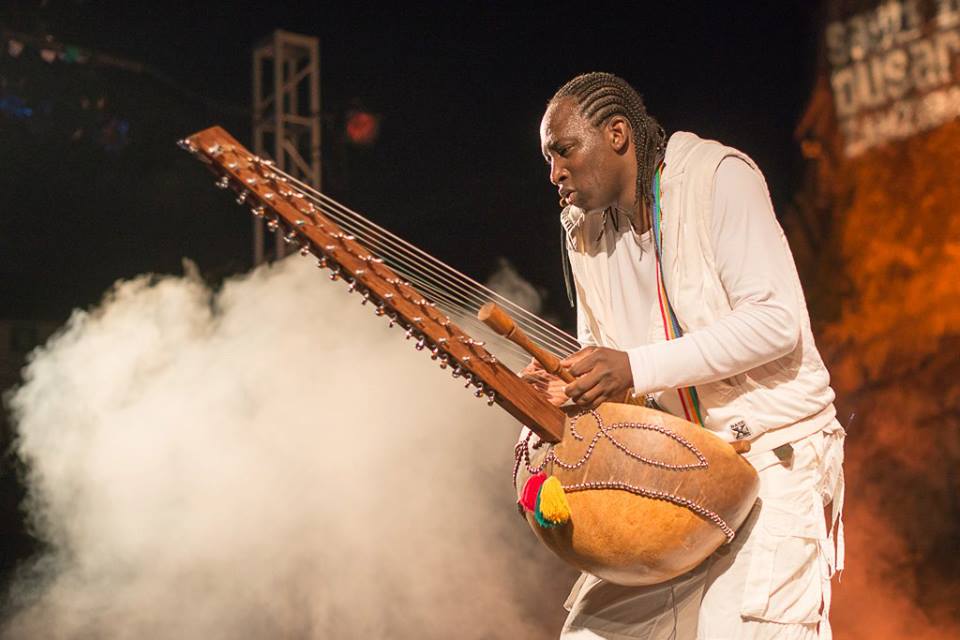
The Griot Tradition
Music plays a profoundly important role in Malian culture, deeply intertwined with its history, traditions, and social fabric.
- One of the most significant musical traditions in Mali is the Griot tradition.
- Griots are hereditary storytellers, musicians, poets, and praise singers who serve as living repositories of a community’s history, genealogy, and cultural knowledge.
- They are highly respected figures, often entrusted with preserving oral histories, documenting important events, and educating younger generations.
- Through their music, Griots weave intricate narratives about ancestral heroes, kings and queens, and significant social or political occurrences.
- Their instruments, including the kora, a 21-stringed harp, the ngoni, a plucked lute, and drums, are central to their storytelling.
- The Griot tradition is not merely about entertainment; it’s a vital cultural institution that transmits knowledge, strengthens community bonds, and provides a unique perspective on Malian history and society.
- The music of Mali reflects the country’s diverse ethnic groups and geographical regions.
- Popular genres include Wassoulou, characterized by its strong female vocals and rhythmic drumming, and Afropop, which incorporates elements of Western pop music with traditional West African rhythms and melodies.
- Music festivals and concerts are major cultural events in Mali, drawing both local and international audiences who come to experience the country’s vibrant musical heritage.
- From ancient Griot traditions to modern Afropop sounds, music remains a central force shaping the identity and culture of Mali.
Wassoulou Music
Wassoulou music, originating from the Wassoulou region of Guinea, holds a significant place within Malian culture and beyond. It’s known for its captivating blend of traditional West African musical elements and contemporary influences.
Rooted in ancient oral traditions, Wassoulou music often incorporates themes of love, social commentary, women’s empowerment, and historical narratives. Its driving rhythms are characterized by the use of percussion instruments like djembe, balafon, and ngoni, while vocal melodies are known for their soaring highs and passionate delivery.
The rise of Wassoulou music in Mali can be attributed to influential artists like Kandia Kouyaté, a pioneer who brought the genre to international attention with her powerful vocals and socially conscious lyrics. Her influence paved the way for other prominent Wassoulou musicians such as Fatoumata Diawara and Oumou Sangaré, who continue to push boundaries and elevate the genre’s cultural impact.
Within Mali, Wassoulou music transcends geographical and ethnic divides, becoming a unifying force that resonates with people from diverse backgrounds. Its vibrant performances often involve elaborate costumes, dance routines, and communal participation, creating an immersive experience that celebrates both tradition and modernity.
Wassoulou’s influence extends far beyond Mali’s borders, contributing to the global tapestry of contemporary music. It has inspired artists worldwide and introduced audiences to the rich musical heritage of West Africa, fostering cultural exchange and appreciation.
The Djembe Drum
Music and culture are inextricably intertwined, shaping societies and transmitting traditions across generations. The Djembe drum stands as a powerful symbol of this connection in Mali, a West African nation renowned for its vibrant musical heritage.
Originating from the Mandinka people of Guinea, the Djembe has become synonymous with Malian culture. Its resonant sound reverberates through villages, ceremonies, and festivals, pulsating with the rhythms of life itself.
Crafted from a single piece of wood, often mahogany or cedar, the Djembe is played by hand. The drummer employs various techniques, using their palms, fingertips, and even the knuckles to produce a wide range of tones and textures.
From the deep, earthy bass tones to the crisp, high-pitched slaps, the Djembe’s versatile soundscape can evoke joy, sorrow, excitement, or contemplation. Its rhythms are fundamental to Malian dance forms, often accompanying intricate footwork and expressive movements.
Beyond its musical role, the Djembe holds deep cultural significance. It is often used in traditional ceremonies, such as births, weddings, and funerals. Its rhythmic patterns can tell stories, express ancestral wisdom, or serve as a conduit between the physical and spiritual realms.
The Djembe’s popularity extends far beyond Mali’s borders. It has gained international recognition as a symbol of African musicality, inspiring countless musicians and contributing to the global tapestry of sound.
In Mali, the Djembe drum continues to be an integral part of daily life, connecting generations through its powerful rhythms and enduring cultural significance.
Nature and Landscape
The Sahel Region
The Sahel region of Africa, where Mali is situated, presents a captivating tapestry of nature and landscape, shaped by its unique climatic conditions and ecological pressures.
Dominated by a vast expanse of semi-arid grasslands known as the “Sahel” meaning “shore” in Arabic, this land acts as a transition zone between the Sahara Desert to the north and the savannas of sub-Saharan Africa to the south.
The landscape is characterized by undulating plains punctuated by scattered acacia trees, hardy shrubs, and occasional rocky outcrops.
Scattered across this arid terrain are ephemeral rivers and wadis, dry riverbeds that come alive during rare periods of heavy rainfall, creating life-giving oases for both flora and fauna.
The Sahel’s climate is defined by its extremes. Long, scorching summers are punctuated by short, unpredictable rainy seasons.
This precarious water balance creates a delicate ecological equilibrium, where drought and desertification loom as constant threats.
Despite these harsh conditions, the Sahel teems with life adapted to its challenging environment.
A variety of grazing animals, such as antelopes, zebras, and ostriches, roam the plains, while reptiles and small mammals find refuge in the crevices and burrows of the rocky terrain.
The Sahel is also home to a diverse array of bird species, from majestic eagles soaring overhead to vibrant songbirds inhabiting the acacia trees.
Niger River Basin
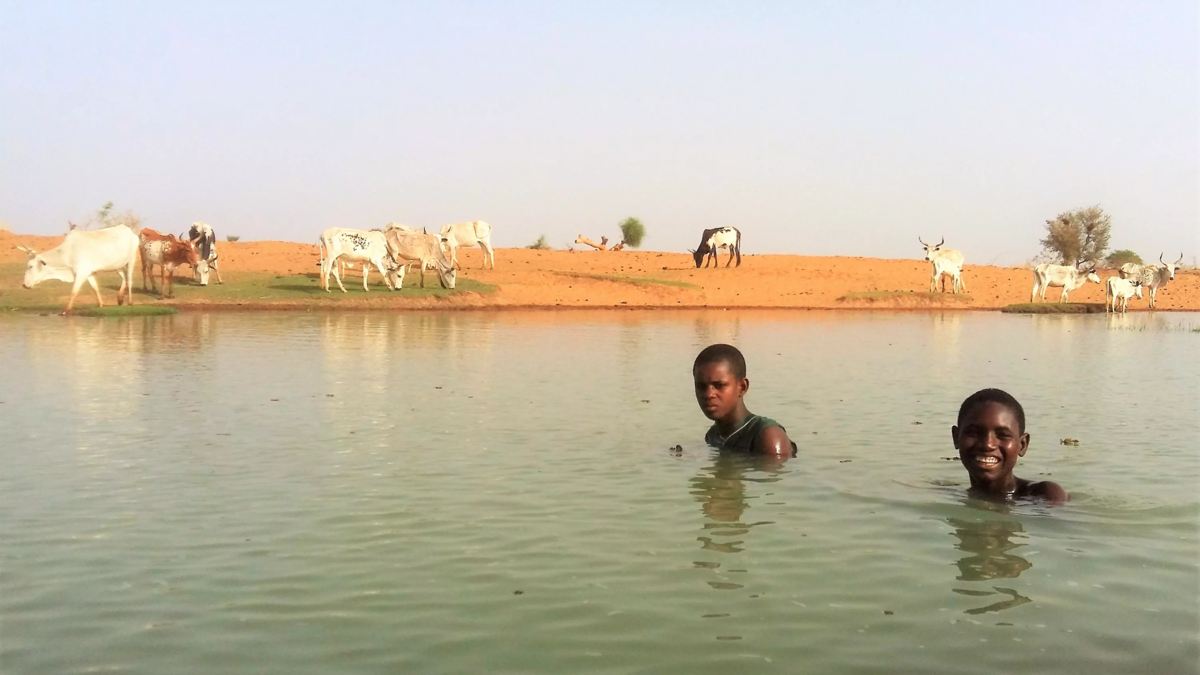
- The Niger River Basin, spanning vast swathes of West Africa, is a region teeming with diverse natural beauty and a rich tapestry of landscapes.
- Towering sandstone cliffs rise dramatically along the riverbanks, their weathered surfaces painted in hues of ochre, terracotta, and crimson by centuries of sun and wind.
- Vast stretches of savannah grasslands, dotted with acacia trees, stretch as far as the eye can see, providing grazing grounds for herds of cattle and wildlife alike.
- Towering baobab trees, ancient sentinels of the savanna, stand stoically against the backdrop of a fiery sunset, their massive trunks serving as vital sources of food and shelter for local communities.
- Along the river itself, dense riparian forests thrive, providing sanctuary for a myriad of birdlife, mammals, and reptiles.
- The basin also boasts vast wetland ecosystems, including floodplains and swamps, which teem with aquatic life and serve as vital breeding grounds for migratory birds.
- Remnants of ancient geological formations, such as sandstone canyons and rocky outcrops, dot the landscape, testaments to the region’s long and dramatic history.
- The Niger River itself, a powerful artery flowing through the heart of the basin, is a lifeline for millions, supporting agriculture, transportation, and livelihoods.
- From the towering cliffs to the lush forests and vast plains, the Niger River Basin is a region of breathtaking natural beauty and immense ecological diversity.
Djenné Mosque
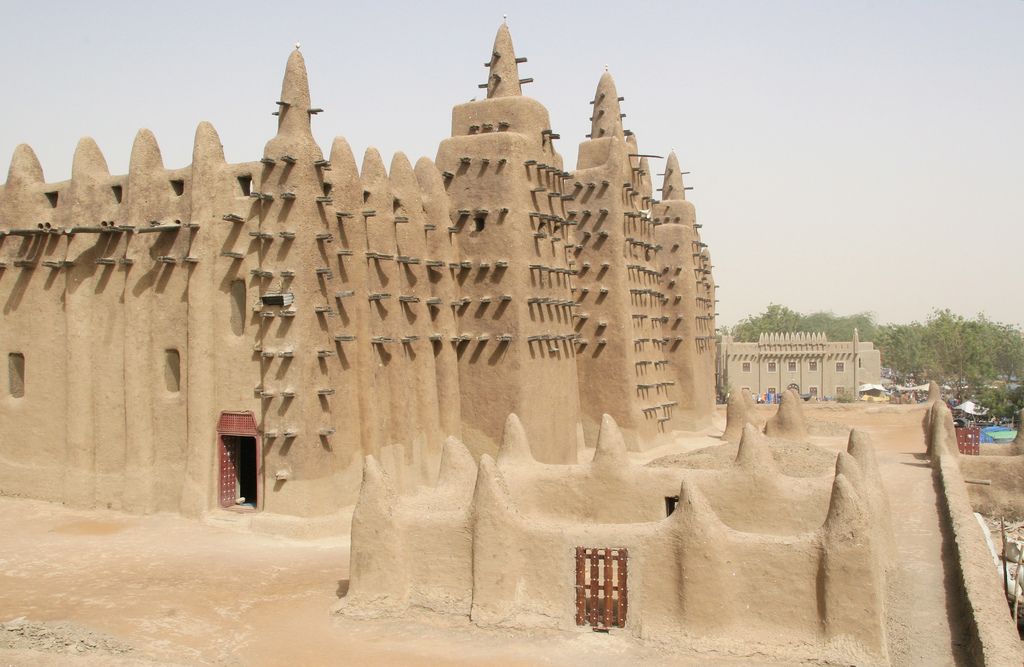
Mali, nestled in the heart of West Africa, boasts a rich tapestry woven from vibrant cultures, captivating history, and breathtaking landscapes. Amidst this splendor lies Djenné, a city that stands as a testament to human ingenuity and the enduring spirit of tradition.
Djenné’s iconic landmark, the Djenné Mosque, is more than just a place of worship; it’s a masterpiece of architecture and a symbol of Mali’s cultural heritage. Constructed entirely from sun-baked mud bricks, this sprawling structure rises majestically against the backdrop of the Sahel landscape.
The mosque’s unique design reflects both practical considerations and artistic vision. The use of mud bricks, a readily available resource in the region, not only demonstrates resourcefulness but also embodies a deep connection to the natural environment.
As Mali’s largest mud-brick building, the Djenné Mosque is an extraordinary feat of engineering. Its massive walls rise three stories high and are punctuated by slender minarets that pierce the sky.
The mosque’s intricate facade is adorned with delicate geometric patterns, a testament to the skilled craftsmanship of Mali’s artisans. These motifs, often inspired by Islamic calligraphy and traditional Malian designs, imbue the structure with a sense of beauty and spiritual significance.
The Djenné Mosque is not merely an architectural marvel; it’s also deeply intertwined with the rhythms of life in Djenné. Each year, during the month of Ramadan, the mosque comes alive with the fervent prayers of thousands of faithful Muslims who gather for dawn and twilight services.
Beyond religious observance, the mosque serves as a community hub, hosting social gatherings and cultural events that strengthen the bonds of unity within Djenné. Its imposing presence overlooks the city, a silent sentinel that has witnessed centuries of change yet remains steadfast in its embodiment of tradition and faith.
- 10 Of The Most Unhealthy Fast-Food Restaurants In The US - October 2, 2024
- 10 Of The World’s Weirdest Fish - October 2, 2024
- 10 Of The Most-Visited Canadian Cities And Why - October 2, 2024

